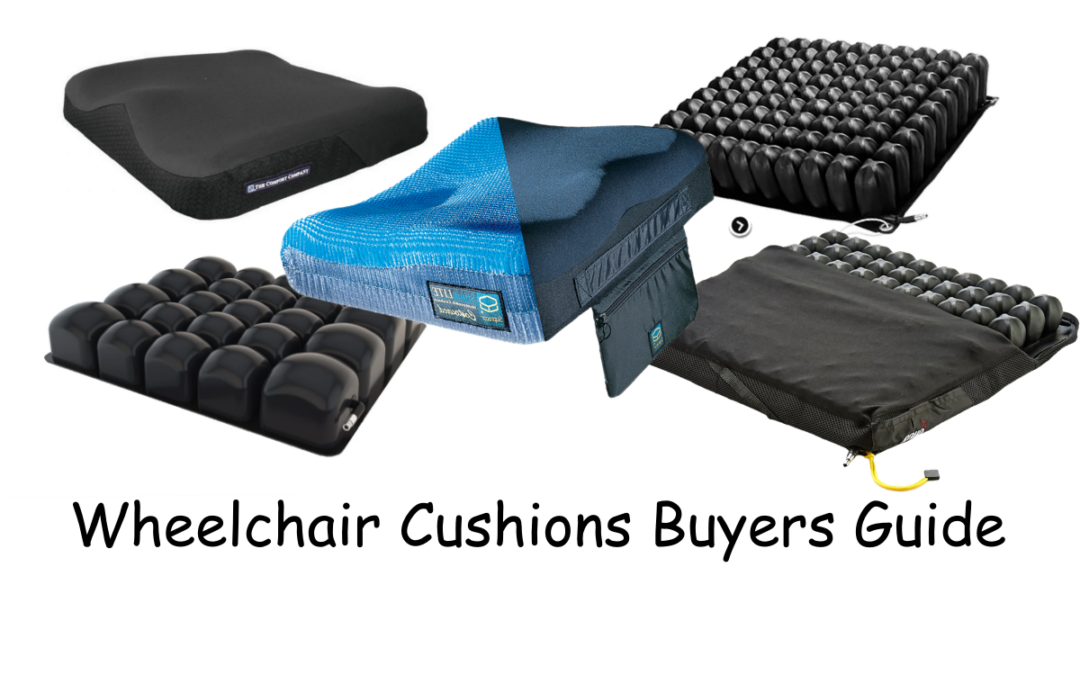Wheelchairs are an extremely valuable piece of equipment during the neurologic recovery process. They provide a means of getting around when walking is not safe and/or is not possible. However, they also come with the risk of developing pressure ulcers. Pressure ulcers are deep wounds that develop as a result of staying in one position for a long period of time. In sitting, the most common pressure ulcers develop on the ischial tuberosities (the bones directly under the gluteus muscles and the coccyx (also known as the tailbone).
All that being said, the wheelchair cushion is the most important part of a wheelchair to prevent pressure ulcers. Wheelchair cushions that are designed to prevent pressure ulcers range in price from $100-$500. So, how do you know which cushion is best for you or your family member?
Do you have pain or discomfort on your bottom when sitting in your wheelchair?
Pain is a sign that a pressure sore could be developing. Pain is a good “warning” sign that you need to get something under your bottom before this pain starts causing real damage (which we will cover in the next section). Not addressing this could result in a pressure ulcer and a much more costly wheelchair cushion. Not to mention the pain associated with having a pressure ulcer. In any case you want to nip it in the butt (pun intended 😜) before it turns into something more serious. And in this case if discomfort is the only issue and there is no history of pressure ulcers, a basic, low profile cushion will suffice.
Roho Mosaic
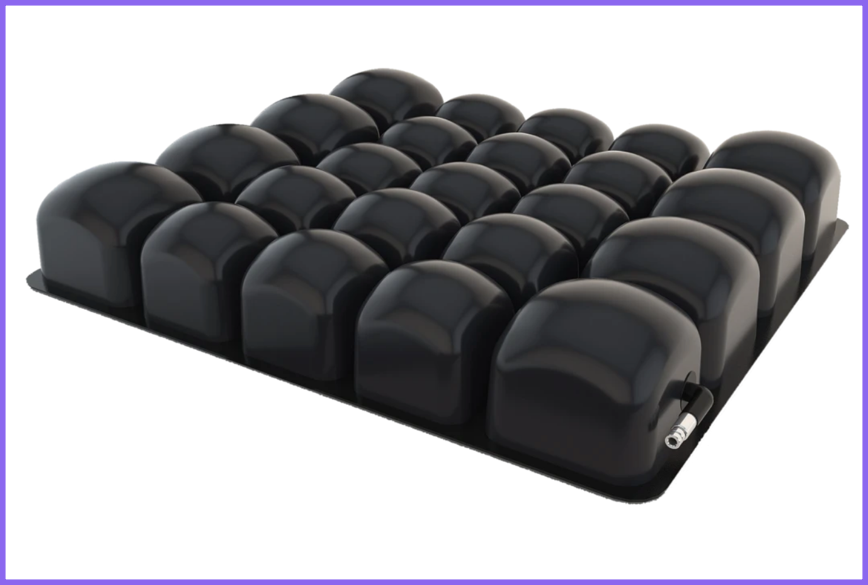
The ROHO mosaic Wheelchair cushion, is designed with inflatable interconnected air cells and provides basic skin protection for wheelchair users. This interconnected air cell design helps evenly distribute pressure without bottoming out.
Pros
- Easy to clean
- Lightweight
- Low profile
- Has a washable, removeable cover
- Comes in different sizes to fit most wheelchairs
Cons
The air filled design means that there is minimal maintenance requirements to keep it appropriately inflated.
Saddle Zero Wedge Anti Thrust Cushion
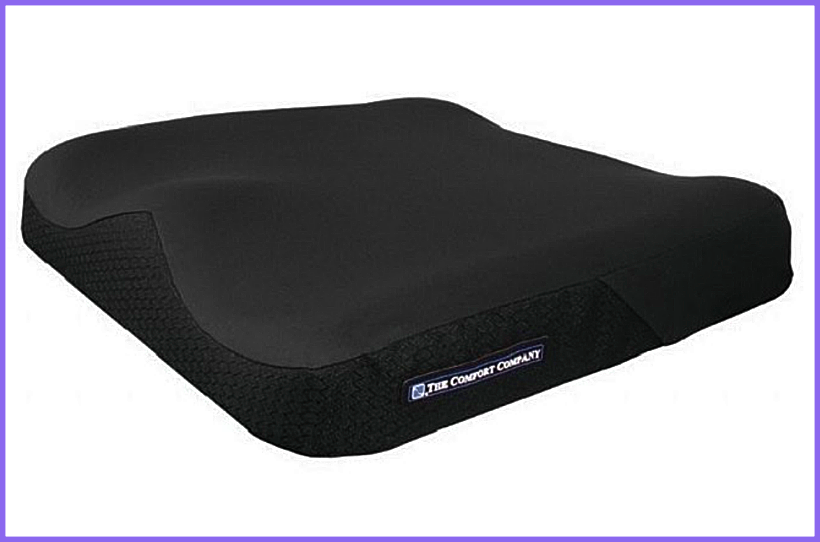
The saddle zero wedge cushion by the comfort company is made of a high density foam that provides a more comfortable sitting surface and helps prevent pressure ulcers. The contoured design also promote better posture. This cushion offers three different designs, zero elevation, “anti-thrust” (prevents the bottom from scooting forward), or a wedge style.
Pros
- Made of foam instead of air so less maintenance
- Removeable, washable cover
- straps to the wheelchair to keep it in place
Cons
- it is a heavier cushion as compared to the lighter air filled mosaic.
Do you have a history of pressure sores?
The most important consideration prior to selecting a wheelchair cushion is if you have a history of “sitting” pressure ulcers. Pressure ulcers are deep wounds that are caused by increased pressure (usually on a “boney” section of the body) that has very little fascia (muscle, fat, skin…etc). For example, the outside of the hips (greater trochanter), the “butt bones” (ischial tuberosities), the tail bone (sacrum), the boney protuberance on the outside of the knee and/or ankle (fibular head and lateral malleoli), and the heal (calcaneus).
A pressure ulcer caused by prolonged sitting, usually occurs near the ischial tuberosities. In sitting, the ischial tuberosities are “pointy”. Therefore (in sitting) there is more pressure on the soft tissue structures underneath that area.
If you have a history of pressure sores in this area of the body, you will need a cushion that will minimize pressure around these boney processes.
The Roho line of cushions is absolutely a non-negotiable for anyone who has a history of pressure sores.
Roho cushios are made of soft, flexible air cells. Depending on the model, air flows freely (single compartment model) between the air cells. This allows the air cell height to adjust to accomodate a bony prominence. For example the air cell directly under the ischial tuberosity will have less air to allow that protuberance to sink further into the cushion.
Roho High Profile Single Compartment
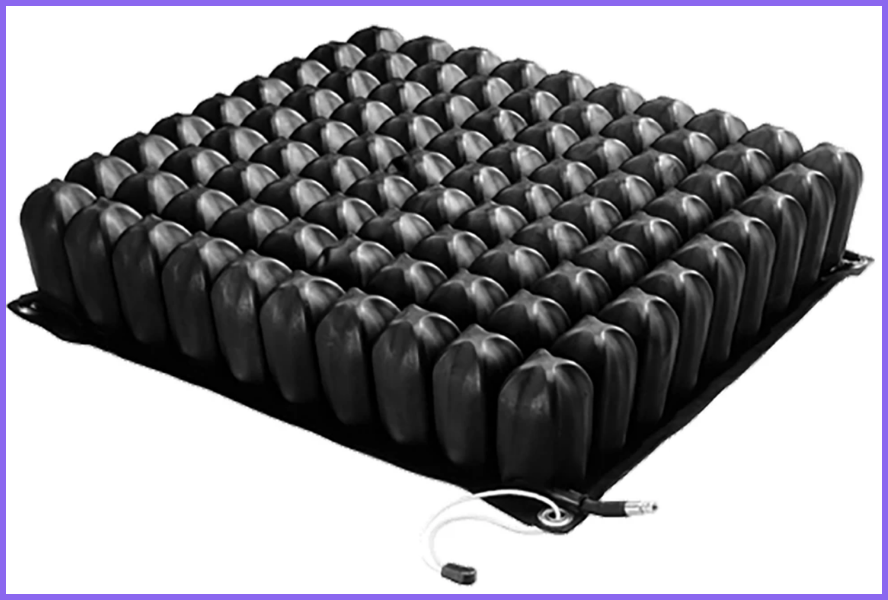
A high profile roho cushion design has 4 inch tall cells. This allows the bottom to sink further into the cushion without “bottoming out”. This higher profile cushion is designed for first time wheelchair users and for anyone who has a staged pressure sore.
Pros
- best for someone who has a staged pressure sore
- The rubber material is easy to clean
- A removeable, washable cover is available for purchase.
Cons
- higher air cells can sometimes create a less stable sitting surface
- it is a heavier cushion
Roho Low Profile Single Compartment
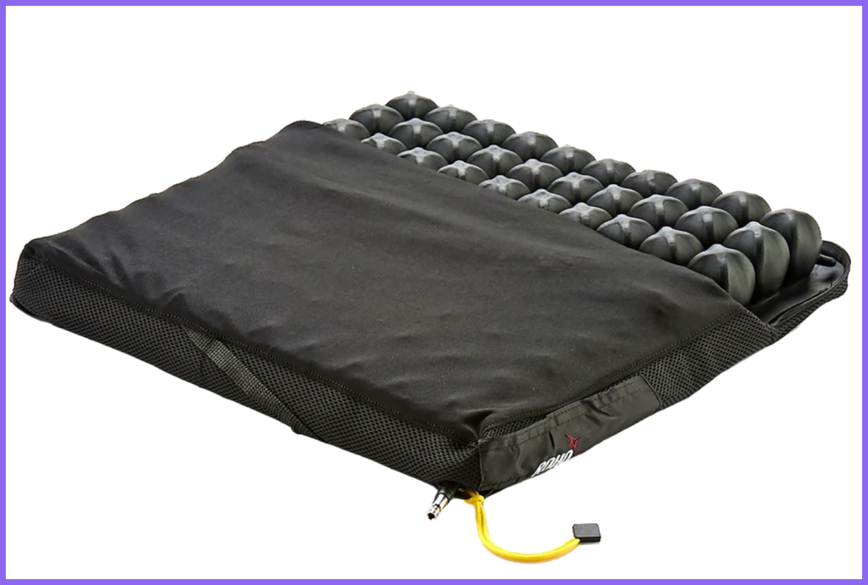
A low profile Roho single compartment cushion is designed with 2 inch cells. As compared to a high profile Roho cushion, the low profile design is lighter. The lower air cells also provide more stability as compared to a taller air cell.
Do you have trunk weakness and/or poor trunk control?
Poor trunk control is due to weakness in the muscles that support the trunk. This is a problem that must be considered when selecting a wheelchair cushion. Cushions that are really good at pressure relief are often “less stable”. A cushion that is not stable, may impact one’s ability to stay upright (in sitting) if the trunk muscles are not strong. Of note, if you have suffered a complete spinal cord injury, it is best to be evaluated by a licensed physical therapist prior to purchasing a specialty cushion.
Supracore Stimulite Wheelchair Cushion
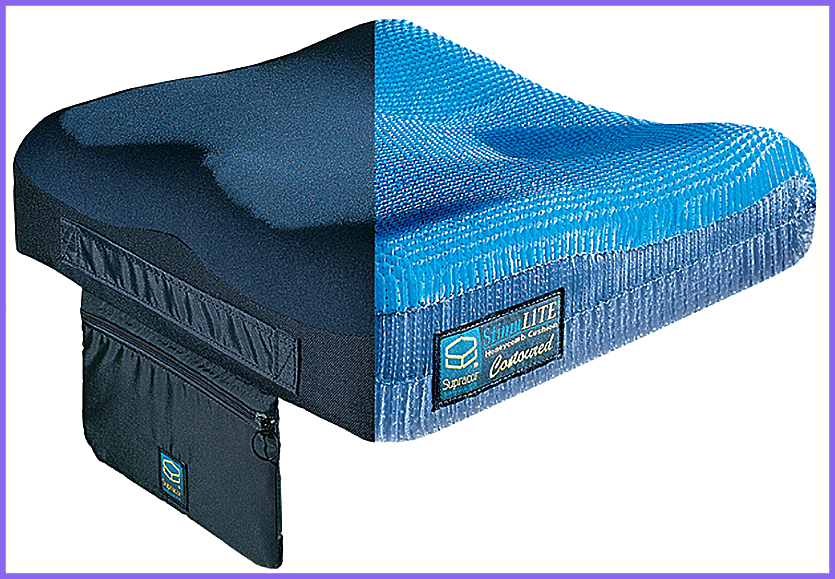
The supracor stimulate contoured wheelchair cushion is made of multiple layers of honeycomb cells specifically designed to create even pressure distribution throughout the bottom and the thighs. The contoured designed helps to prevent the legs from rolling inward or outward. Softer cells are located under the coccyx and ischial tuberosities to allow these bony areas to sink down in the cushion and prevent a pressure sore.
Pros
- Slightly lighter than the roho cushion
- Comes with a removeble, washable cover
- The plastic material is easy to clean as compared to a foam material.
Cons
- The cushion advertises that the honeycomb helps with airflow however, in my experience, once someone is sitting on this cushion, the “air pockets” actually “close off”. This combined with the plastic material creates moisture in hot environments.

